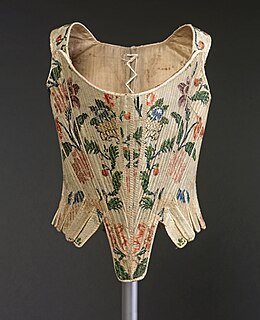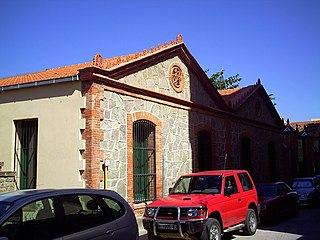 W
WArenys de Mar Museum is a museum in Arenys de Mar, Spain. It is made up of two different sections: the Marès Lace Museum and the Mollfulleda Mineralogy Museum, and it also conserves and exhibits the collection from the old Arenys de Mar Fidel Fita Municipal Museum.
 W
WThe Can Marfà Knitwear Museum, located in Mataró (Spain). Part of the Mataró Museum it is devoted to the knitting and hosiery industry. It is situated in one of the three-storey warehouses of the former Marfà factory in Mataró, the most important Knitted fabric factory in Spain before 1936.
 W
WThe National Museum of Science and Industry of Catalonia known by its acronym (mNACTEC) is one of the three national museums of Catalonia, located in Terrassa, near Barcelona. Its mission is to showcase and promote an understanding of scientific, technical and industrial culture, and furthermore to preserve, study and present the establishment and evolution of scientific and technical advances in Catalonia, their industrial application, and above all their social implications and impact. The museum is an Anchor point on the European Route of Industrial Heritage.
 W
WThe Museu Tèxtil i d'Indumentària, in English Textile and Clothing Museum, is a museum opened on 1982 and located in the Palau Reial de Pedralbes in Barcelona. The museum possesses countless objects and pieces of major artistic and historical value that make up their collections of garments, fabrics and jewellery. Regarding their collection of clothes, the museum allows you to take a journey through the history of textiles, from the 16th century right up to the modern day. The museum's collections include Coptic, Hispano-Arab, Gothic and Renaissance fabrics, as well as embroidery, a section on lacework and a collection of prints. Also worth mentioning is the jewelry collection, comprising approximately five hundred pieces that were made and produced in Spain.
 W
WThe Premià de Mar Printing Museum, located in the old gas factory of the town, is a museum dedicated to explaining the history of textile printing in Premià de Mar and all of Catalonia. It is part of Science and Technology Museum of Catalonia and the Barcelona Provincial Council Local Museum Network. Its main objective is to expose samples and objects related to textile printing and to explain the techniques used over time, as well as to highlight the important role that this economic activity has played in the past as a driver of industrialisation in Catalonia.
 W
WThe Sant Cugat Museum was opened on 23 April 2003; its mission was to oversee the conservation and dissemination of the historic, artistic and cultural heritage of Sant Cugat del Vallès in Catalonia. It is part of the Barcelona Provincial Council Local Museum Network and has two centres: the Sant Cugat Monastery and Casa Aymat plus two other buildings, the Celler Modernista and the Chapel of Sant Domenec. In both areas there are spaces reserved for temporary exhibitions related to art, history and local and universal heritage. In addition, the Museum works to recover the heritage and memory of the town, periodically organising walks that help people discover local history and heritage.
 W
WThe Textile Museum and Documentation Centre is a museum institution located in Terrassa, a city with an important textile tradition. Managed by a consortium consisting of Terrassa Town Council and Diputació de Barcelona, it presents a panoramic view of the different styles and techniques used all over the world in fabric making throughout history. It is part of the Barcelona Provincial Council Local Museum Network.